Waiheke Island
Waiheke Island is known internationally as one of the most beautiful islands in the world. Just 40 minutes from downtown Auckland by ferry, Waiheke is often referred to as the jewel in the Hauraki Gulf. At Stay Waiheke, we've selected the best accommodation that Waiheke has to offer to ensure our guests have a truly special holiday.
The island is a unique blend of stunning landscapes, from intimate rocky bays and white sandy beaches to bush clad hills and rolling vineyards. Our island is also packed with a rich history, a fantastically diverse community and arts scene, and wonderful artisan food producers. However, it is for our incredible selection of wine that we are perhaps best recognised.
Beaches
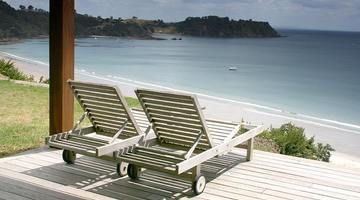
There are five glorious white sand beaches on the north side of the island to choose from – Oneroa, Little Oneroa, Sandy Bay, Palm Beach and Onetangi Beach. The southern side beaches include Surfdale, Blackpool, and Rocky Bay, and the Eastern side of the island is the shell covered beach at Whakanewha Regional Park – the perfect spot for a kayak and also where the camping ground is located. Man O’War Bay at the "bottom end" is also well worth a visit (if you have a car) for some wine tasting at the renowned Man O' War Vineyards tasting room right on the beach.
Geography

The island is 19.3 km long from west to east and varies in width from half a kilomter to 10 kilometers, and has a surface area of 92 km². The coastline is 133.5 km, including 40 km of beaches. It is very hilly with few flat areas, the highest point being Maunganui at 231 metres. The climate is slightly warmer than Auckland with less humidity and rain and more sunshine hours.
Townships
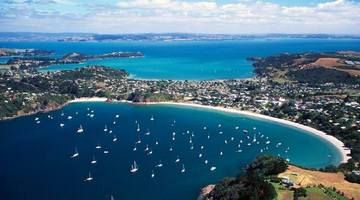
- Oneroa
- Surfdale
- Onetangi
- Rocky Bay
History

Visit the Stony Batter WWII fortifications, which were built to keep the Japanese forces out. Open to the public they offer both an insight to the extent of defence preparations and wonderful views of the southern end of the Hauraki Gulf. Waiheke was discovered and settled by Maori approximately 1000 years ago and many signs of Maori occupation on Waiheke Island still exist today. Archaeological sites are scattered over the island including more than forty pa sites, cooking pits and terraced areas.
Viticulture
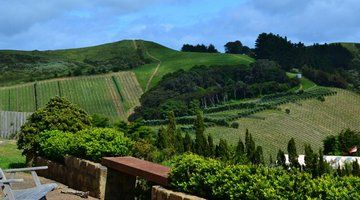
Winegrowers have successfully matched the unique maritime climate and ancient soil structures to the selection of classical grape varieties in order to produce red and white wines with distinctive varietal character. There are over 20 wineries on the island, and during the summer months most have their cellar doors open to the public. You can visit most wineries via an organised tour, self-drive tour or hop on a many of the local buses.
Walk or Hiking
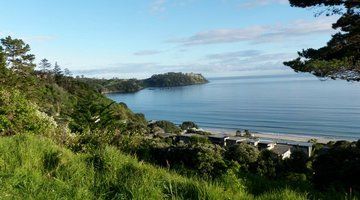
Over 8 marked walks ranging in difficulty cross Waiheke with routes suitable for the very fit as well as easier routes for those just out for a stroll. Walkway maps can be found at the i-Site information center in Oneroa.
Birdlife on the island
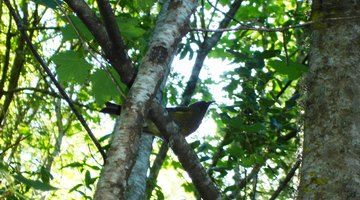
There is a successful dotterel breeding programme, oystercatchers (torea-pango), white-faced heron (matukumoana), pied stilts (poaka), Caspian terns (Taranui), paradise ducks (putangitangi) are all found around the island Godwits (kuaka) are also sometimes spotted on the tidal flats while on the south side of the island where a large wetland is home to bittern (matuku), banded rail (mohopereru) and spotless crake (puweto).
Native Bush
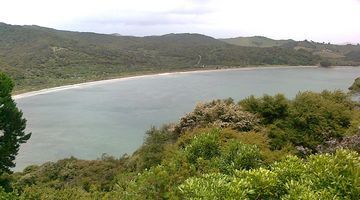
Waiheke Island carefully guards it’s status as a possum free island. The absence of these pests means forests and wildlife are allowed to thrive.
Visiting New Zealand
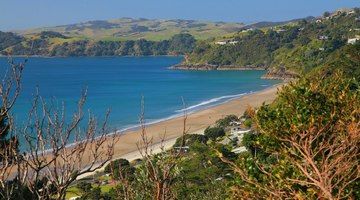
If it's your first time in New Zealand be sure to check out the 100% Pure New Zealand page for facts about travelling in New Zealand.